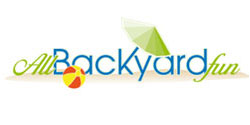
Boulder Snow Plowing Weather
Oct 30th
BOULDER, Colo. October, 20 2025 News by Boulder channel 1– The city begins to get ready for winter well before it snows. Preparations typically include training new team members and ensuring equipment is maintained. This is the second season the city will be using the storm-size response framework to guide its snow and ice operations. The goal is to support multimodal travel and accessibility for all people by focusing on safety, equity, mobility and customer service before, during and after it snows.
 The storm-size response framework clearly defines which areas will be cleared and the level of service the community can expect based on how much it snows. The framework divides snow and ice response into small (less than 3 inches), medium (3 to 8 inches) and large (more than 8 inches) amounts of snow accumulation. Boulder typically receives 25 to 46 snowfalls annually, with the majority bringing less than three inches of snow.
The storm-size response framework clearly defines which areas will be cleared and the level of service the community can expect based on how much it snows. The framework divides snow and ice response into small (less than 3 inches), medium (3 to 8 inches) and large (more than 8 inches) amounts of snow accumulation. Boulder typically receives 25 to 46 snowfalls annually, with the majority bringing less than three inches of snow.
The city and its partners regularly clear 425 miles of city streets and over 70 miles of multi-use paths when it snows. During winter storms, the city aims to clear key emergency routes, major streets, the on-street bike network, access to hospitals, schools, transit and critical infrastructure, as well as neighborhood streets with steep slopes and the city’s multi-use path system for walking and bicycling. Community members can view the city’s snow and ice response map to see which streets, paths and bus stops are cleared in small, medium and large storms. The framework serves almost 25,000 homes in Boulder that are directly adjacent to a snow route, compared to the previous program’s 24,000 homes.
The city is committed to continuous improvement and adjustment with the storm-size response framework. This season, several streets with steep slopes have been added to the small storm response. While these specific streets were previously addressed in medium and large storms, they will now also receive response in small storms. This is because they were the subject of multiple requests for service last season by the city’s first responders and transit operators, carry high traffic volumes, and were operationally feasible to add to existing snowplow routes.
“The framework guides how we respond to snow and allows us to focus on priorities we heard from the community, such as clearing major streets, steep slopes, pedestrian crossings, multi-use paths and bike routes,” said Transportation Maintenance Senior Manager Rene Lopez. “Our team works 24/7 to keep the city’s transportation system safe and accessible when it snows. Community members can help out by planning ahead when snow is in the forecast, being aware that typical travel conditions cannot always be maintained and giving our crews plenty of space.”
The storm-size response framework is intended to respond to snow and ice with a consistent level of service on high priority routes, and for first responder access. To achieve this goal, the city does not plow streets by request.
Winter weather is just around the corner – here’s what to expect and how to prepare:
- People who must travel during winter weather are encouraged to visit the city’s website to view live video of current road conditions at key intersections throughout the city.
- The city does not typically clear side and residential streets because it would significantly increase costs, impact other services and delay the response time on primary routes.
- City property owners and residents are required to keep sidewalks, curb ramps and curb extensions next to their property clear of snow and ice within 24 hours after snowfall stops.
- Property owners are responsible for disposing of branches and other debris that fall on their property after storms. Learn more about how to clean up after a storm.
- Community members who want to help their neighbors can volunteer for the city’s Shovel-a-Stop Program to help clear snow and ice from bus stops, or the Cultivate SnowBusters Program to help clear snow for older adults who need assistance.
- Cold air can impact a home’s pipes and plumbing. Learn how to winterize your home.
- When it snows, check the city’s website and follow the city on social media for regular updates.
- It’s important to note that sometimes Boulder experiences significant snow followed by below freezing temperatures. The result can be layers of packed ice, and the city’s equipment can’t break up packed ice. Community members can report a public safety hazard or other unusual situation online or by phone.
Visit the city’s website for more information about how to prepare for winter and to learn how the city responds to snow and ice. For more information about winter travel, visit COtrip Traveler Information.
Julie Causa, Media Relations, 719-396-1733
Rene Lopez, Transportation Maintenance Senior Manager, 303-413-7149

Boulder Braces for Hunger Crisis as SNAP Ends Nov. 1; Food Banks ‘Out of Food
Oct 28th

 ”The loss of SNAP coincides with over 1,800 local government workers facing furloughs or termination due to federal and state budget cuts. During the pandemic, the City of Boulder and Boulder Valley School District opened emergency food sites. Scott pressed city leaders: “What are you doing now by Nov. 1?”
”The loss of SNAP coincides with over 1,800 local government workers facing furloughs or termination due to federal and state budget cuts. During the pandemic, the City of Boulder and Boulder Valley School District opened emergency food sites. Scott pressed city leaders: “What are you doing now by Nov. 1?”
Local Inmates Struggle with Addiction Recovery Amid Gaps in Boulder County Facilities
Oct 28th

Boulder County Jail, housing over 700 inmates at any given time, offers “substance abuse counseling” through its Behavioral Health Services. But insiders paint a bleaker picture. “It’s group sessions twice a week, maybe, if you’re lucky,” says one former inmate who served six months last year for possession. “No real structure. No AA meetings, no sponsors. I walked out worse off than when I went in.” Now three months sober through a private NA program, the individual echoes a chorus of complaints. County data, obtained via public records request, reveals a 68% recidivism rate among addiction-related offenders released from the jail in 2024—far above the national average of 50% for similar cases.
The jail’s programs, managed by Wellpath and Mental Health Partners, emphasize cognitive behavioral therapy (CBT) and medication-assisted treatment (MAT). While MAT can curb withdrawal, experts argue it’s no substitute for the spiritual and communal backbone of 12-step programs. “AA and NA aren’t just meetings; they’re lifelines,” says a University of Colorado addiction specialist. “Studies show participants in 12-step integration have 20-30% lower relapse rates. Boulder’s jail ignores that at great human cost.”
 The Joe Pelle Center, Boulder County’s $25 million alternative sentencing facility that opened last week on Airport Road, promises “holistic reentry” for low-level offenders, including those with substance use disorders. With yoga studios, job training kitchens, and Flatiron views, it feels more like a community college than a lockup. Yet, programming details raise red flags.
The Joe Pelle Center, Boulder County’s $25 million alternative sentencing facility that opened last week on Airport Road, promises “holistic reentry” for low-level offenders, including those with substance use disorders. With yoga studios, job training kitchens, and Flatiron views, it feels more like a community college than a lockup. Yet, programming details raise red flags.
The center’s curriculum, outlined in county memos, leans heavily on in-house therapy and vocational workshops—again sidelining AA and NA. “We’re innovative, not traditional,” says Pelle center spokesperson . “Our evidence-based approach includes telehealth MAT and peer mentoring, tailored to modern needs.” But skeptics aren’t buying it. “It’s questionable at best,” says Colorado Voices for Recovery. “Without AA/NA as the primary recourse, you’re setting folks up to fail. AA and NA are the only long-term support system available once people are released—no county program follows them home.”
The group points to a pilot program’s early stumbles: Of the 20 addiction-focused residents admitted since opening, three have already absconded, per sheriff’s reports. One parent, whose son is slated for the center next month, told Channel 1, “He needs meetings, not memos. Why reinvent the wheel when AA works—and keeps working after the doors open?”
Boulder County’s addiction epidemic—fueled by fentanyl, alcohol and isolation—demands more than good intentions. Without embracing proven paths like AA and NA, these facilities risk becoming revolving doors to despair.





















